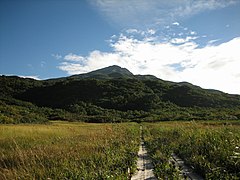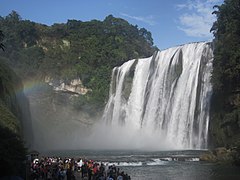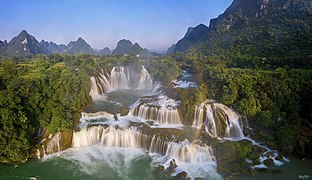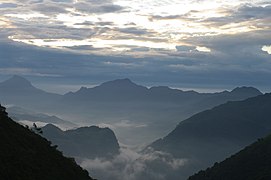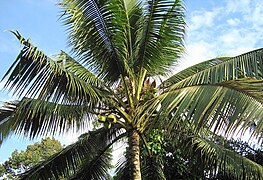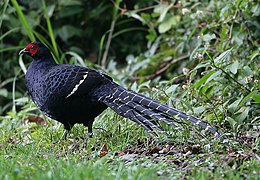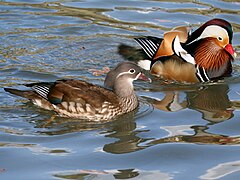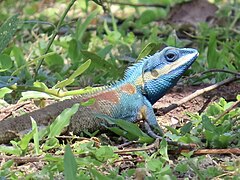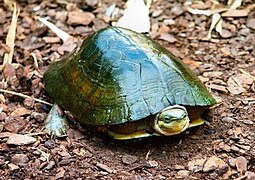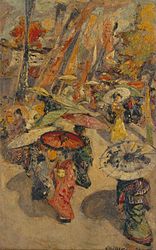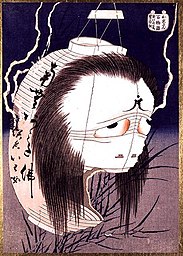Esonice
This article is incomplete because it is pending further input from participants, or it is a work-in-progress by one author. Please comment on this article's talk page to share your input, comments and questions. Note: To contribute to this article, you may need to seek help from the author(s) of this page. |
Serene Kingdom of Esonice Esonya 光国 | |
|---|---|
| Motto: "Land of tranquility" | |
| Anthem: "Land of a Thousand Flowers" | |
Location of Esonice | |
Map of Esonice | |
| Capital and largest city | |
| Official languages | Esonian |
| Recognised national languages | Esonian |
| Recognised regional languages | Various dialects |
| Religion | Secular |
| Demonym(s) | Esonian |
| Government | Federal parliamentary constitutional monarchy |
• Serene Emperor | Minari |
• Prime Minister | Himi Kinmura |
| Legislature | Ryebo Kokuhē (Federal Parliament) |
| Shimgiin (House of Councillors) | |
| Syugiin (House of the Representatives) | |
| Establishment | |
| 8th-9th centuries | |
| 16th century | |
| May 2nd 1912 | |
| Feb 11th 1940 | |
| Area | |
• | 354,835 km2 (137,003 sq mi) |
| Population | |
• 2022 estimate | 34,708,538 |
• Density | 95/km2 (246.0/sq mi) |
| GDP (PPP) | 2020 estimate |
• Total | $1.427 trillion |
• Per capita | $42,289 |
| GDP (nominal) | 2024 estimate |
• Total | $1.329 trillion |
• Per capita | $38,312 (10th) |
| Gini (2020) | 33.6 medium |
| HDI (2022) | very high |
| Currency | Esonian Zou (Ƶ) (ESO) |
| Time zone | UTC-8 |
| Date format | dd/mm/yy |
| Driving side | left |
| Calling code | +66 |
| ISO 3166 code | ES |
| Internet TLD | .es |
Esonice (Esonian: 光国, Esonya or less commonly Kügoku), officially in Anglish the Serene Kingdom of Esonice is an island country located in the north of the Shield Islands in West Alharu and Aurelia, bordering the Oriental Ocean and Tiauhai Sea to the west and the Lotus and Chidama seas to the east. Made up of various islands, Esonice covers a size approximately of 354,835km2 with a population density of less than 100 people per square kilometre. The main island making up the majority of Esonice’s landmass is the island of Shimdō, known for its heart shape appearance, the two other major islands being the much smaller islands of Ajima and Hakaoshima. Politically, Esonice is made up of eight provinces called chō (Esonian: 州) and one metropolis called to (Esonian: 都) which is Maimedo, the nation's capital. The federal provinces are based on the eight historic regions of Kunho, Hokai, Kyutsū, Hyakai, Näzan, Syosai, Byasai and Senzan. Despite being an island nation, Esonice shares immediate borders with numerous states due to the history of colonisation in Esonice. The country borders the territories of Sademi and Mihura administered by the Confederate States of Florentia which are frequently disputed by Esonice, the self-governing territories of Yedo under the United Federation of Garindina and Maimi under the Kingdom of Seylos. Esonice also borders the citystate of Motoharu-chū, formally a colonial possession of Seylos and former county within Kyutsū province. Its closest maritime neighbours are the state of Giokto, the Commonwealth of Andalla and the mainland of Florentia. Maimedo while also being the nation's capital is also the most populous city with the city of Maruguchi taking second place.
Esonice is classified as a high income developed nation, home to a population of 34,708,538 inhabitants. Following after its turbulent years during the 19th and early 20th centuries, Esonice saw the creation of a strong and stable federal parliamentary democracy and preservation of the Serene Monarchy through constitutional monarchy under the suprevision of Iverica, Gaellicia and Seylos during the interim government, also enjoying a period of tremendous economic growth which lasted from the 1960s to the 1990s after regaining full sovereignty. Today Esonians enjoy a high standard of living, alongside a free universal healthcare system, high standards of education, and economic freedom. Esonice has a vibrant cultural heritage, spanning from Esonice's artistic scene, its culinary prowess, literature, mythology, music such as E-pop and popular culture, spanning from Esonice's strong animation scene known as katsuha, Esonian manga and video games.
Being in the top 12 of the wurld's biggest economies, Esonice is an important hub for technological research and development with a strong focus on the electronics industry.The country is a part of several international and intergovernmental institutions. Esonice is member state of the Aurelian League, Argic-Thalassan-Alharun Regional Association, Eurth Group of 7, Group of Island Nations, East Oriental Trade Agreement, and an observer to the League of Alharu and Aurelian Native Nations. Esonice is also a permanent member of the Assembled Nations Security Council.
Etymology
WIP
History
Prehistoric Esonice
TBA
Ancient Esonice
TBA
One Hundred Kingdoms Period
TBA
Golden Age Esonice
TBA
Early Modern Esonice
TBA
Modern Esonice
TBA
Masahiko's Rebellion
TBA
Esonian Civil War
TBA
Second Aurelian War
TBA
Contemporary Esonice
With the collapse of Mitonese command and liberation of Esonice during the final years of the Second Aurelian War by the Esonian resistance with support from Iverica, Seylos and Gaellicia in 1938, representatives from the three countries including the only son of the killed Serene Emperor Suun, Yoshinori and the temporary Esonian government gathered in the less devastated city of Maruguchi away from the tragically near-razed capital of Maimedo. The gathering, later becoming known as the Maruguchi Conference involved several day discussions about the reorganisation and modernisation of the Esonian state including the stabilisation of the war exhausted country, Esonice's future and what to do with members from the former Mitonese-controlled government and the puppet Serene Emperor Tomihito. After 5 days of discussions, the Maruguchi Agreement was reached entailing that Esonice would be placed under the shared supervision of Iverica, Seylos and Gaellicia until January 1st 1942 with Yoshinori being instated as the new Serene Monarch and head of state with an interim government. The treaty also included that for the duration of the agreement Esonice would forfeit most of its international sovereignty outside of having limited economic freedoms, the three countries being given priority in access to Esonice's resources, a peacekeeping force being present and Esonice being given economic assistance in reconstruction for a period of 10 years following 1939. The agreement was put in place after the official end of the Second Aurelian War and Esonice signing a peace treaty with the defeated Mitonese creating the Interim State of Esonice.
During the interim period Esonice underwent several sweeping structural, administrative, economic and legal changes tackling and replacing several problems that plagued and kept Esonice stagnant for the past two centuries with the close involvement of Serene Emperor Yoshinori. Those reforms became known as the Inmin Restoration (応民維新, Inmin Ïshin) after Serene Emperor Inmin, at the time Serene Emperor Yoshinori. Starting in July of 1939, several former government officials from the Mitonese controlled government working from 1922 onwards were put on trial and persecuted for egregious treason and complacency in genocide against Esonice and its people. The former puppet Serene Emperor Tomihito was also put on trial and executed on September 7th 1939, the same day on which Serene Emperor Suun was executed on the orders of the Mitonese controlled government in 1925.
TBA
TBA
Riots of '96
On February 14th of 1996, a group of five adolescent high school students from Okado, Kyutsu province committed suicide on school grounds leaving behind suicide notes and a letter with their collective experience within the Esonian educational system. The tragic event inspired mass demonstrations across Kyutsu in several schools and universities against the brutality and coldness of Esonian education. Despite the demonstrations being quoted by several local and national media outlets as peaceful, riot police was sent to demonstrations which resulted in the deaths of 3 university students at Okado Technical University. The deaths and suppression of several demonstrations by riot police sparked national outrage among not only students and parents, but the general Esonian population. Protests were held nationwide in multiple cities and towns in all Esonian provinces, in response to the protests the Esonian government under the leadership of the federal democratic party raised armed riot police.
The repeated brutality of Esonian riot police against protestors televised by news outlets turned protests into violent riots with protestors resisting and beginning violent confrontations with police. The multi-month riots saw the streets of several cities barricaded by protestors and many schools, universities and other public and private buildings set on fire, severly damaged and looted. By June of 1996 the protests grew far-past their original intent of bringing awareness to the harshness of Esonian education to other issues such as worker's rights and policing. Extremist political groups from both the far-left and the far-right have also became involved with the protests in an attempt to radicalise and rile up protestors. The violent protests happening across Esonice soon found itself under international light and was a shock to many due to Esonice being perceived as a stable country. The government's handling of the protests fell under international scrutiny with the federal democratic government being criticised as incompetent, cold and by some commentators, tyrannical and cruel. It was also revealed by some Esonian news outlets that the government attempted to curtail information relating to the protests spreading which further put Esonice under international scruity. As a result of the Esonian government's actions relating protests. Esonice's international status as a democratic state was put into question. Calls were also put forward for an AN peacekeeping force to be sent to Esonice to calm the protestors and for the Esonian state to temporarily relinquish security and defence to the AN. The were also internal calls for the at the time 23 year old Serene Emperor Minari to dissolve the federal parliament and the instatement of martial law.
Fearing revolution, Esonice's reputation being further tarnished internationally and the government being perceived as having lost face and legitimacy, the Esonian prime minister and head of the federal police both resigned on September 10th in disgrace of the same year. The resignations were followed by the announcement of elections for a new government to take power in 1997 and for police to stand down. The tense climate in Esonice soon after began cooling as protests subsided, some protestors holding celebrations on the streets. Investigations into the 1996 protests approximated the amount of deaths during the year-long turmoil to 1,364 and the amount of injuries to 4,852, with 988 of the deaths and 3,671 of the injuries being protestors and 376 of the deaths and 1,181 being police. This made it the deadliest political event in contemporary Esonian history with it being compared to the protests that followed the execution of Serene Emperor Suun by Mitonese-controlled Esonian authorities in 1922.
The 1996 protests or riots, dubbed by various nicknames such as the riots of '96, protests of '96 or the hakusha revolution (Esonian slang word meaning "shell/husk person") had and continue to have a profound influence on Esonian political culture and society, changing the way Esonians engage with the policial process. The protests are also popular in Esonian popular culture, being referenced in several pieces of media such as katsuha, video games and movies. Memorials were also created following the protests in Maimedo and Okado for the 5 high school students and the people that have died during the havoc. The subsequent civic liberal government committed to reform, taking some but not all demands of the protests such as banning of corporal punishment in school and educational reform, protection of worker rights and banning possession of firearms by police.
21st Century
TBA
Geography
WIP
WIP
- Gallery
Hakamora volcano in the Hakamora nature reserve in Byasai. The volcano is located in the Hakamora caldera, the largest of it's kind and is the largest volcano in the country.
Lake Bishimu is Esonice's largest lake and largest fresh water lake located in Kunho. It's considered one of the most important locations in Shinshi religion.
Nujimoto falls in Hokai, known for the various local legends surrounding it and the cave behind the waterfall.
---, Mount Tomitomo being the tallest mountain in Esonice.
The steep Chugai cliffs in Kyutsū province.
Dragon's Canyon in western Syosai province, named after the many dragon blood trees that grow there.
Climate
WIP
Biodiversity
The Esonians islands are highly biodiverse, home to several endemic species of fauna and flora (WIP)
Flora

WIP
WIP
- Esonian flora
The dragon blood tree found in western Esonice endemic to the Esonian Islands, the colour Esonian red oiriginating from the tree's sap which was used in dyes
Lotus flowers are highly valued in Esonian culture due to their many uses, it's also used in the production of gyushiori (藕糸織), lotus silk
The bellflower cherry is native to the Esonian Islands, widely used as an ornamental plant
The coconut tree, called "mokoshi" (椰子) in Esonian, was historically used for medicinal, culinary and cosmetic purposes by Esonians.
Fauna
Esonice is the home up to 100,000 species of wildlife WIP
---
Like with flora, the Esonian islands have a vast array of endemic wildlife particularily on the mainland island of Shimdo thanks to its diverse climate. There are several endemic reptilian species across Esonice, among testudines the moss box turtle and four-eyed turtle primarily reside in the mountainous Senzan while others like the golden coin turtle, yellow-headed box turtle and Esonian roofed turtle live in eastern Esonice including the tiny black-breasted leaf turtle. Not many testudines inhabit western Esonice due to its aridity except on coasts, however a unique species of small turtles called endemic to Syosai known as the slumbering turtle or menkei turtle (Esonian: 眠亀) adapted to life in seasonal streams spending most of its time resting until the flow returns. Other than testudines, there are several species of lizards, snakes and amphibians such as the emperor's toad with a legend being that once a Serene Emperor had a garden of them, sword-tail newt, WIP There are some endemic crocodilians to the islands, most known being the Hokainese alligator which is the provincial mascot of Hokai WIP
---
A vast catalogue of endemic bird species can be found in Esonice such as the Esonian red-beaked rail, WIP
---
Alongside endemic reptiles and birds, there many species of endemic mammals can be found. The adaptive Kyustuan fox be found practically inhabiting the entirety of Esonice, WIP however most famous is the Esonian tiger which primarily resides in central and eastern Esonice. WIP
---
Among insects that are endemic to the Esonian islands WIP
WIP
- Esonian fauna
The endemic Kyustuan fox, ancestor to the domestic small Esonian fox historically used for pest control
The emperor pheasant, an endemic gamebird pheasant to Esonice
The Hokainese alligator, also known as the muddy dragon is a Crocodilian endemic to primarily eastern Esonice, in Esonian known as bororyū (泥竜) meaning "mud dragon"
Male (right) and female (left) painted duck, a dimorphic species of perching duck
The Esonian white-cheeked gibbon, known in Esonian as the marubō monkey (丸頬) meaning "round cheeked"
The blue crested lizard is a diurnal lizard that can be found all across Esonice both in forests and green urban areas such as parks
The moss box turtle is a species of turtle endemic to Esonice primarily inhabiting the mountainous central interior, named in Esonian as mohobakohame (苔箱亀) from which it got its Anglish name
Politics
TBA
Administrative divisions
WIP
| flag | Division | Capital | Type | Population (2023) |
Area (km2) |
Density (per km2) |
Counties | ||
|---|---|---|---|---|---|---|---|---|---|
| Greater Maimedo | 大柑水都 | Maimedo | 柑水市 | Metropolis | 4,121,472 | - | - | - | |
| Näzan | 南泉州 | Sushu | 朱株市 | Province | 4,128,574 | - | - | - | |
| --- | Kunho | 近湖州 | Hasakyō | 木中市 | Province | 6,082,112 | - | - | - |
| Byasai | 平西州 | Fukutsu | 福津市 | Province | 1,808,542 | - | - | - | |
| Hokai | 花海州 | Maruguchi | 丸口市 | Province | 7,248,665 | - | - | - | |
| --- | Kyutsū | 巨東州 | Okado | 岡戸市 | Province | 6,731,428 | - | - | - |
| --- | Senzan | 千山州 | Momota | 百田市 | Province | 940,216 | - | - | - |
| --- | Syosai | 暑西州 | Kuihara | 開原市 | Province | 1,088,427 | - | - | - |
| --- | Hyakai | 向海州 | Kiriyama | 霧山市 | Province | 2,559,102 | - | - | - |
Foreign Relations
WIP
Law
TBA
Military
TBA
Economy
The Serene Kingdom of Esonice has a robust highly developed export-driven free-market economy, it is the 12th largest economy in the wurld, the 4th largest in the Oriental Ocean and the largest economy in Alharelia (Alharu-Aurelia) and the Aurelian League. In terms of GDP per capita, Esonice takes 21st place in the wurld.
The Serene Kingdom is notable for its rapid recovery and transition from a war-torn agricultural economy in the early 1940s to an industralised middle-income country by the mid 1950s through the financial support Esonice gained through the Maruguchi Agreement and effective fiscal policy and economic planning. Following the 1950s, Esonice entered a period of rapid economic growth fuelled by its plentiful and youthful labour force, growing well-educated class, assistance from the government in industries of special interest and aformentioned financial support and effective fiscal policy. Between the 1960s up to the mid 1990s the Serene Kingdom developed into a high-income developed country. The period by many Esonians is considered a golden age as Esonian society experienced social and cultural revitalisation after the chaotic 2 centuries before
As a diversified economy, Esonice takes income from a range of sectors and industries, however since the 1950s the country had a special focus on
Since 2011 Esonice started making efforts towards transitioning to a digitalised economy and becoming a digital state
The Serene Kingdom's largest export partners are Orioni, Iverica and
WIP
High tech manufacturing
The high tech manufacturing sector is considered Esonice's critical key economic sector in maintaining the country's economic relevance on the stage and the stability and growth of the economy. Industries such as the semiconductor industry and other electronic components have especially been of special interest to the Esonian government which provided assistance to businesses. Since the early days of Esonice's rapid industralisation there have been talks among economists, business leaders and special interest groups of Esonice becoming a potential technological hub within the upper Aurelian Shield which the Esonian government has keenly considered. In 1948 these aspirations for Esonice's economic future have been accepted by the federal democratic government led by --- which set several goals and plans for future successive governments to reach and realise. The 1950s saw several of the goals being achieved both by the civic liberal and federal democratic governments such as the educational reform of 1952 which saw Esonian education get orientated towards the sciences, mathematics and engineering with students excelling in such subjects being given recognition and benefits. During the decade the government began encouraging bussinesses towards entering the electronics industry enticing them with prospects of close government support and assistance. This assistance got realised in the form of a government grant named the Uyama fund. The grant, named after economist Hasa Uyama, intended to propell and help financially assist prospect businesses and individuals in pursuing their interests in the electronic industry. Several bussinesses benefited from the grant ever since its creation including Masatomi, SanTech, Hayamatsu and Sanabe Industries. Several university graduates also have been given the grant.
The 1970s and 80s were a critical time for the Esonian economy as the country transitioned from being a middle income manufacturing hub to a high income developed economy. This was marked by the decades long aspirations of Esonice becoming a technological hub in the Aurelian Shield becoming realised with the rise of the Esonian electronics sector with companies such as Masatomi Electronics, Sanabe Industries and SanTech being at the forefront. The growth of Esonice's electronics sector however faced intense competition from other competitors within the space, Esonice's biggest competitor being the Sunset Sea Islands that overshadowed the Esonian electronics industry and hindered their growth on the glubal stage. Despite the drawbackers however, the Esonian electronics industry continued to grow steadily over the decades with the government maintaining its assistance within the space. The information technology industry has also been growing in importance in Esonice since the 1990s with companies such as Digisonic, becoming another industry of special interest in the country especially with Esonice's administrative and economic digitalisation efforts.
In 2021 before the Terrabellum, high tech industries accounted up to 27% of Esonice's economy and was projected to continue to grow during the decade. The two most prominent competitors within Esonice's tech space are Masatomi and SanTech. Masatomi and SanTech, a dedicated "pure play" semiconductor foundry, have since 1992 been fighting over dominance within Esonice's semiconductor industry. Other notable companies within the space are Hayamatsu and Sanabe Industries. Digisonic over the 2010s has rose to become a star of Esonice's information technology industry and software market.
Tourism
Since the 1980s tourism has slowly become a significant sector within the Esonian economy, with further support from the government advertising Esonice to the international community through tourism campaigns starting in the 1990s. Popularisation of Esonian culture through products and media also had a very significant impact in attracting both foreign tourists and investment, and also helping Esonice's rapidly growing service sector.
Types of tourism varies, but the most popular form of tourism in Esonice is cultural tourism with there being a noticeable increase of international arrivals to Esonice during national holidays, events and festivals. The most visited city is Maimedo, the nation’s capital and well known for its big and very competitive street food scene. The Orange Palace, royal residence of the Serene Monarchy in the city, sees the most visits from tourists than any other historic landmark in Esonice with the palace being open to the public for most of the year. The other popular cities after Maimedo are Maruguchi, Sushu, Hasakyo and Okado. Maruguchi and Hasakyo being popular cities for sightseeing of their historical monuments, museums, art galleries and historic old towns. While Okado and Sushu being popular for shopping, variety of recreational activities and their strong youth cultures. Sushu is known as a popular sports destination due to its annually held surfing competitions. Despite being restricted area due to ongoing tensions between Esonice and Florentia over the disputed territories of Sademi and Mihura, the walls separating Sademi and Mihura from the rest of Esonice has become a relative point of interest for more risky tourists because of the art done by local artists through the decades and its history.
Due to Esonice’s environmental diversity and close state protection and preservation of natural areas, ecotourism and wildlife tourism have also become popular forms of tourism to the nation. International arrivals partake in outdoor activities such as hiking and climbing in the Central Shimdō Mountains, visiting natural landmarks such as Dragon’s Canyon and Nujimoto falls, cruising such as river cruising, sailing and observing local wildlife. Agritourism has also seen an increase in popularity in the past decades.
Seeing an opportunity to help struggling rural communities, The government has used tourism as an answer to many small towns and villages in the countryside endangered to abandoment due to younger inhabitants leaving to larger more economically developed cities. Wanting to encourage young people to stay and improve local economies, the government started a program funding rural communities and helping advertise them as tourist destinations. Since 2004 this has led to a revival of many towns, most notable examples being the historic villages of Hatani in Syosai and Ūgasai in Senzan where considerable growth in quality of life and wealth was observed including the villages quickly growing local service sectors which further led into development of their respective communities including building of schools and clinics. Many young people moved back in now that there were plentiful jobs, including new families which saved Hatani and Ūgasai from near total abandonment before the 2000s. This formula has also been applied to already abandoned villages. Miji, a once bustling hilltop village in Senzan and depicted by Iverican impressionist artist Solomon Simeon in the 1880s was left completely abandoned by its inhabitants after the death of its last resident in 1982. However in 2009, the Sankai provencial government with the help of the descendants of Miji families promised to revive the village as part of its revival agenda. Miji has seen massive success with the now revived village becoming a popular hiking and art destination. The revival program hasn't however gone without criticism. Critics of the program including some locals have claimed that this has led to the gentrification of the Esonian countryside with rural communities both losing their charm and identities. Allegations have also been ledged against the Esonian government of intending to purge local differences in national and cultural centralisation agendas.
Science and technology
WIP
Agriculture and fishery
WIP
WIP
Mining

Esonice has a thousands of years long and rich history of mining, going as far back as the 13th century BC. It historically has been one of the major sources of wealth for Esonice, in particular gem mining because of the abundance of precious and semi-precious stones - including large deposits of gold and silver thanks to the archipelago’s extensive volcanic history. Once a major sector within Esonian helping fund the country’s Industrialisation efforts in the early to mid 20th century, mining today has become a much smaller operation within the economy. A shadow of its former self threatened by growing pressures from environmental and government groups. Despite that mining continues to play a role in Esonice, especially in the international gem market.
Various mineral deposits can be found all over Esonice including zinc, iron, marble, kaolin, silica, nickel, graphite, copper, ilmenite, cobalt, sulfur, lead and small deposits of bauxite and coal. Gold and silver can still be found in large quantities in western Esonice after nearly all gold and silver mines in the east became depleted after centuries of continuous extraction.
Extensive focus is still given to the mining of gems because of Esonice’s plentiful deposits. Often being nicknamed the "Gem Isle" or the "Crystal Islands" because of its large deposits of valuable stones, Esonice continues to live up to its nickname with there being 35 varieties currently known, western Esonice being the most diverse and containing some of the most valuable stones in the Esonian archipelago. Topaz, spinel, tiger eye, garnet, jasper, opal, morganite, tourmaline, carnelian, diamond, onyx, sardonyx, aquamarine, moonstone, chrysoberyl, cordierite can all be primarily found in the western provinces of Esonice. Rare vein deposits of red beryl being found in Syosai province, including grandidierite found in both Syosai and Byasai provinces. Painite has also been discovered in Senzan province. Meanwhile in the eastern provinces deposits of olivine, kornerupine, amethyst, citrine, lapis lazuli and jadeite can be found. Stones that can be found all throughout Esonice are sapphire, fluorite, azurite, quartz, rose quartz, ruby, beryl, agate, zircon and peridot. Esonice's most abundant gem is sapphire, the largest sapphire mine located Hyakai province. Sapphire is also the national gem of the country. Many brands such as the Esonian fashion brand Keiba have a big interest in maintaining the country's gem mining and cutting industries, investing a lot of money into those companies even going as far as buying them.
Demographics
TBA
Esonice has a population of approximately 34,708,538, majority of which are nationals
Largest cities or towns in Esonice
Esostatics | |||||||||
|---|---|---|---|---|---|---|---|---|---|
| Rank | Division | Pop. | Rank | Division | Pop. | ||||
 Maimedo  Maruguchi |
1 | Maimedo | Greater Maimedo | 4,121,472 | 11 | Fukutsu | Byasai | 428,562 |  Okado  Sushu |
| 2 | Maruguchi | Hokai | 2,285,038 | 12 | Shunjuku | Näzan | 419,788 | ||
| 3 | Okado | Kyutsū | 1,902,872 | 13 | Senha | Kyutsū | 396,472 | ||
| 4 | Sushu | Näzan | 1,646,473 | 14 | Kinsaka | Kyutsū | 333,386 | ||
| 5 | Ryūguchi | Hokai | 1,084,667 | 15 | Ryūmoto | Kunho | 301,824 | ||
| 6 | Kinaka | Kunho | 998,846 | 16 | Ūhanaiba | Kyutsū | 282,582 | ||
| 7 | Tamasu | Hokai | 825,254 | 17 | Yumedo | Hokai | 242,289 | ||
| 8 | Kusama | Kunho | 752,149 | 18 | Kuihara | Syosai | 238,314 | ||
| 9 | Sekagoshi | Kyutsū | 610,473 | 19 | Ūmiya | Hokai | 224,119 | ||
| 10 | --- | Hyakai | 578,736 | 20 | Matsura | Hokai | 192,867 | ||
Religion
WIP
WIP
Education
WIP
WIP
Ethnic groups
WIP
WIP
Languages
WIP
Culture
TBA
Art
TBA
TBA
Architecture
TBA
TBA
Folklore
TBA
TBA
Festivals and holidays
TBA
TBA
Performing Arts

TBA
TBA
Literature and philosophy
TBA
Cuisine
TBA
Fashion
TBA
TBA
Music
TBA
TBA
Media
TBA
Sports
TBA
See also
Notes
TBA
References
TBA
External links
TBA






